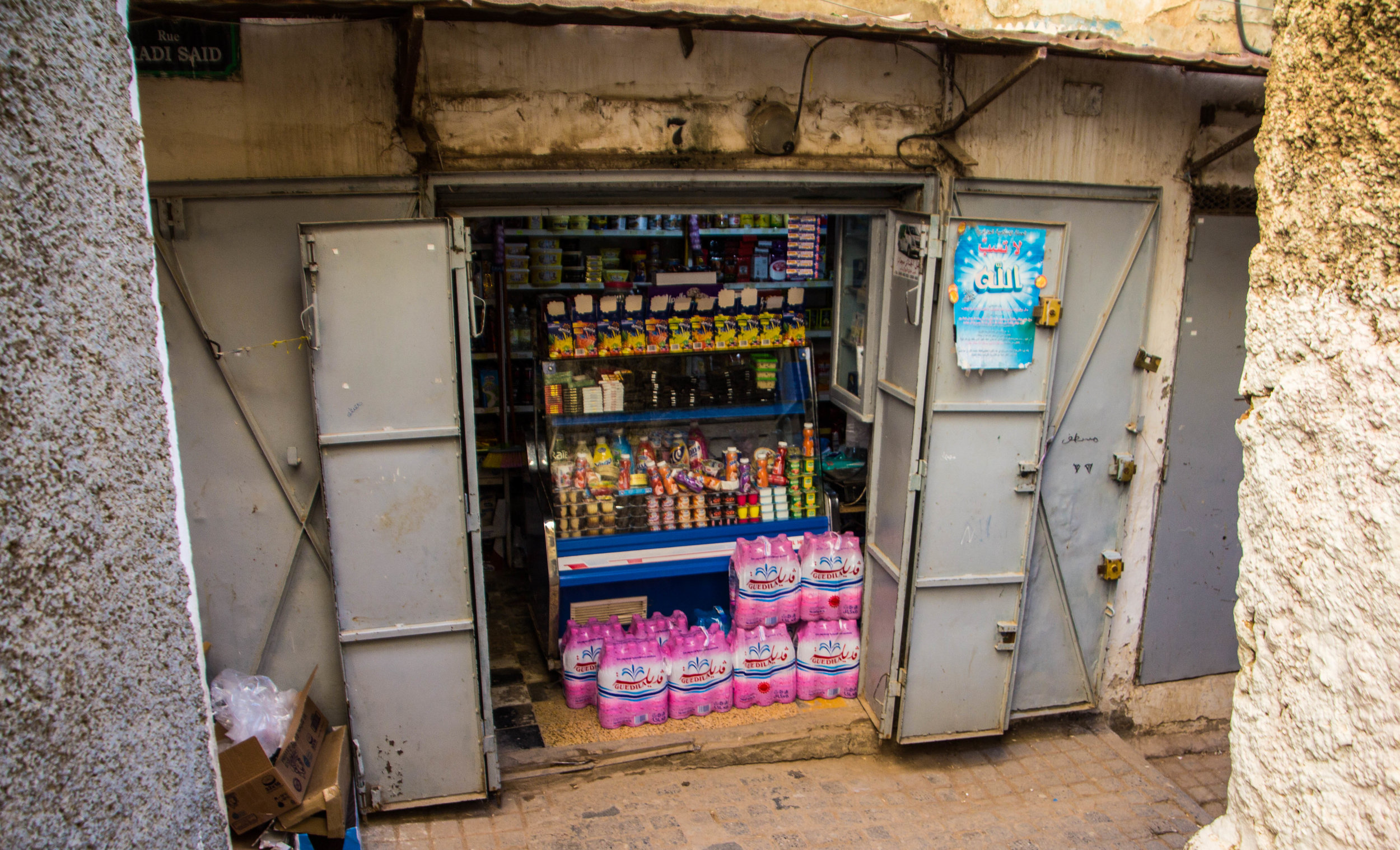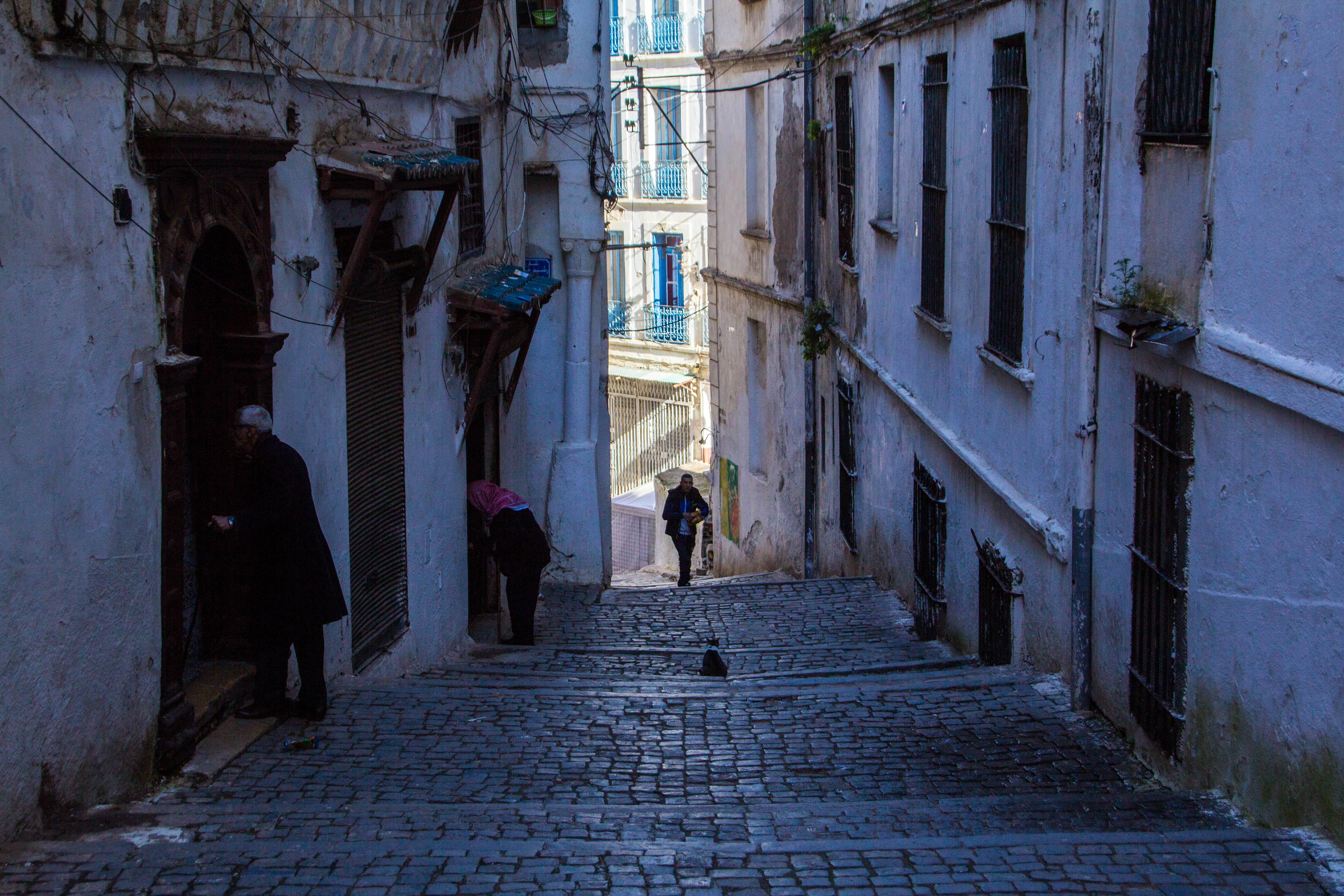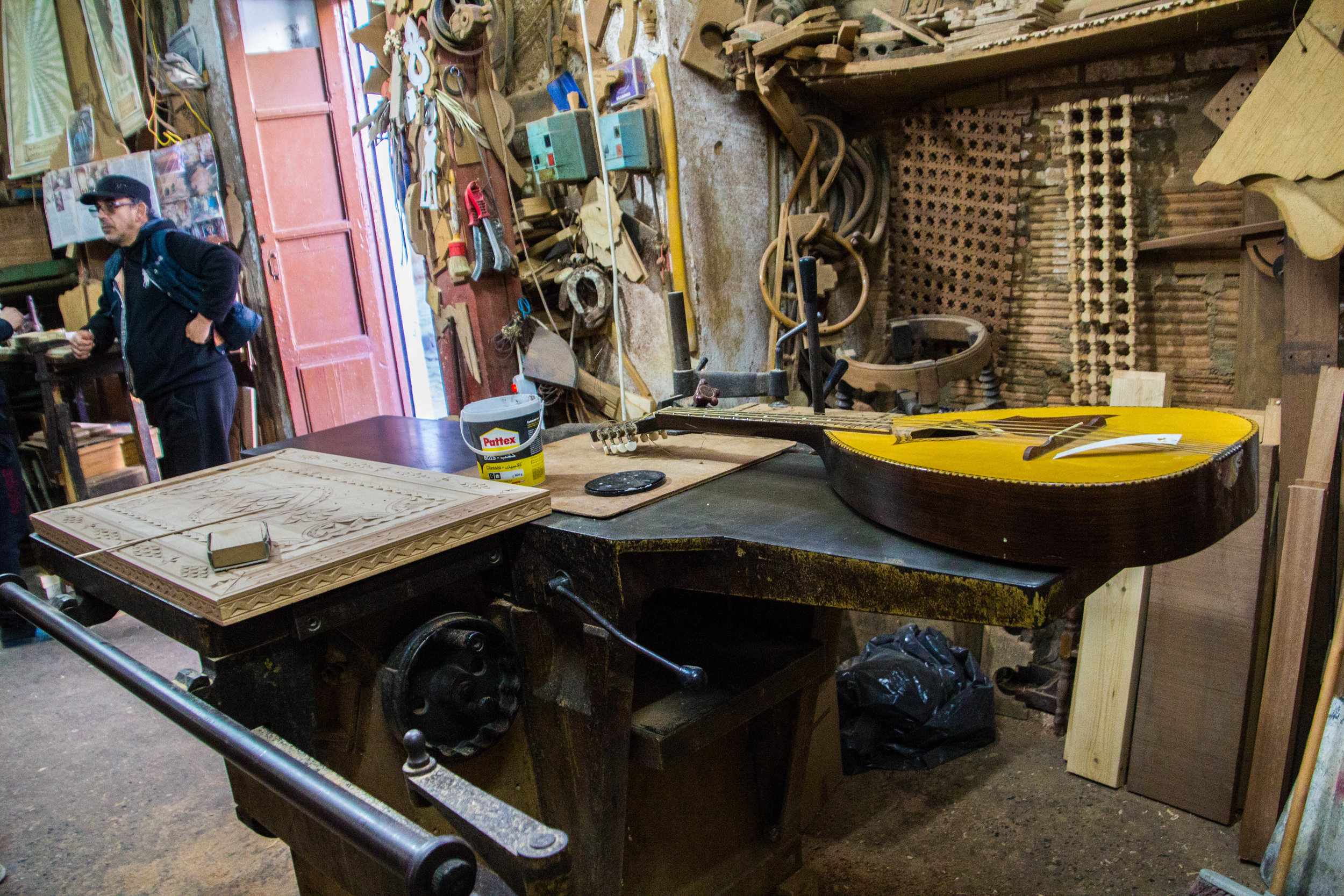To finish this series on Algeria, we're going to dive headfirst into the legendary Casbah of Algiers. This is the oldest neighborhood in Algiers, and many locals would also say that it's the most dangerous. In fact, the vast majority of locals that we asked about it told us that they themselves would not walk through this neighborhood alone. Yikes!
Now, if you've been following this series on Algiers/Algeria, you know that I've been preaching about how unexpectedly safe Algiers turned out to be. So it might seem odd that I'm now telling you about a place that is supposedly so dangerous. Well let me kick this off with a spoiler for you: the Casbah isn't so bad. It definitely requires some basic street smarts, but aside from that, I was pleasantly surprised. But I'm getting ahead of myself—let's a take a couple minutes to bring you up to speed on what the Casbah is.
About The Casbah of Algiers
You might see or hear the term "casbah" thrown around a lot when exploring this part of the world. A "casbah" historically refers to a walled citadel in a North African city or town, and the casbah of Algiers is no exception. The wall itself is little more than ruins at this point, and you might be tempted to say the same thing about the whole neighborhood at first glance, but don't let the disrepair fool you. The Casbah has never been more lively. Large communities and families still thrive here, with a generation of children growing up here just like they always have.
However, the neighborhood itself is slowly crumbling. Despite being designated as a UNESCO World Heritage Site, little up-keep has been given to this neighborhood over the past decades. It is only now that an effort seems to be underway to preserve this place. Walking around the streets of the Casbah, you will see places where buildings have literally just collapsed. This is a big problem because the Casbah is so dense that every building is connected to almost every other building around it. That means that the collapse of one building can put 10 more buildings in serious danger. For this reason, you will see support beams and braces all over the place, sometimes turning narrow alleyways into obstacle courses.
To say the streets of the Casbah are labyrinth would be putting it mildly. One of the primary reasons locals warned us against exploring the Casbah alone is that we were nearly guaranteed to get lost. However, because the Casbah is built into a mountainside that slants downwards towards the sea, it's easy to keep your sense of direction. In the upper Casbah, the Mediterranean is nearly always visible, but by the time you get to the lower Casbah, things begin to level off and it's a lot easier to get turned around. It's common for these streets to be so narrow that you can reach out and touch both walls at the same time.
In Algeria's war for independence from France (1954-1966), much of the Battle for Algiers was famously fought here in the Casbah. Algerians used their knowledge of these windings streets to their advantage in fighting against the French, and as you can probably guess, came out victorious. There's a famous Italian movie that was shot here shortly afterwards (also in 1966) called The Battle of Algiers that locals all seemed very proud of, even in 2018. Shown here is one of the most famous frames from that movie—these two are sitting on a typical Casbah staircase. Things look pretty much the same half a century later.
So, at a glance, the Casbah might look like an intimidating slum area, but looking at this place from street-level doesn't give you the full story. Every house in the Casbah looks more or less the same from the outside, so it's impossible, even for locals, to guess what lays on the other side the doors in their neighborhood. Some houses are small and run down, but there are also hidden mansions tucked away down small alleys. There are also indoor pathways that connect these building to one another, known and used only by Casbah residents. These pathways often cross over top of alleyways, forcing people to duck as they walk. You'll see some of those bridges between houses in the photos that are to come.
Here's a map of the Casbah. Note that the roads on this map do not even come close to covering all the roads that exist here. I will tell you that the street separating Upper Casbah from Lower Casbah is called Mohamed Benchneb—this is the inside info that I got on the ground in the Casbah—but since leaving, I haven't been able to verify this. So take it with a grain of salt.
A Walk Through The Casbah of Algiers
The Casbah was one of THE things that I wanted to see in Algiers. However, when I arrived in Algiers, locals universally discouraged me from coming here, saying that it was dangerous. I spent a few days trying to figure out what exactly the danger was, aside from the possibility of getting lost, but the answer was pretty anticlimactic.
Apparently there have been a few instances of foreigners waving around their expensive cameras like idiots and, consequently, having their cameras stolen. Most of these stories involved young boys running up, grabbing the camera, and disappearing into the labyrinth that is the Casbah. Some of these theft victims tried to chase after their thieves... but would just end up lost.
So that's the big ~danger~ of the Casbah. If you flaunt your wealth, there's a remote possibility of somebody stealing from you.
Sorry folks, but this does not make a neighborhood dangerous. This applies everywhere. Granted, the Casbah requires a bit more awareness than most places, but overall, this is to be expected pretty much everywhere. And the fact that locals are so wary of something so benign should serve as a testament to how safe Algiers really is.
But these were things that I had not yet learned when I was planning my exploration of the Casbah—so we had our guide Boualem take us through. In retrospect, I would not hesitate to spend a day walking around in here by myself, but Boualem wasn't just an insurance policy—he was also a fountain of knowledge about this place, without whom I would not have been able to get half as many cool photographs. I'll include his contact information at the end of this post if you're interested in coming to Algiers and hiring him.
To start the day, Boualem drove us up to the top of the ridge. This would ensure that the whole day was a downhill walk. Parking was scarce up here, but once we had found safe harbor for the car we began our journey into the heart of this dense neighborhood. I'll lead with some pictures...
The roads were very narrow, and I often had to duck to get under low-hanging overpasses of the indoor road system. The first 2 things that jumped out at us as we walked were, 1) the intricately designed doors (pictured above and below) and 2) the prevalence of support beams surrounding some of the more precariously positioned houses. As we passed by groups of locals on the street, we were often greeted with strange looks. I remembered Yasin's words from a few days earlier: "we don't get a lot of visitors." There was one point where we turned the corner to a group of men talking angrily (mostly in Arabic, from what I could tell). Boualem gave me a discreet signal to put my camera away. As we walked towards them, one of them approached us and began speaking angrily to Boualem. At this point, it seemed pretty clear that these mens' anger had something to do with our presence.
"Okay maybe it IS dangerous here" I thought to myself... but no sooner had the thought crossed my mind, than the men shook hands with Boualem and walked away.
"What the hell was that??" we asked him anxiously? (I mean, that had to be about us, right?)
Boualem replied with a laugh, explaining that these men were actually just complaining about Algerian politics.
So... it turned out that it had nothing to do with us whatsoever. I felt stupid (and a little narcissistic) for being so worried. That was the moment that I realized that all the fear mongering about the Casbah was a false narrative. Fake news! So that's the last time I'm even gonna talk about it.
So I loosened up and we moved forward!
As the Casbah continued to unfold before us, I would often catch a glimpse behind the veil, into everyday life here. These glimpses came in the form of tiny open-front general stores, games of pick-up soccer in small squares, and doors left hanging open as families went about their business. It never fails to surprise me to see the normality of life in these incredible places. Eventually I'll catch on that all of us, all across the world, need and do almost the exact same things... but almost 30 countries later this still seems to bewilder me.
Walking downward, the Mediterranean sea rose higher on the horizon until eventually it was hidden behind the buildings that surrounded us. Here are are some of my favorite vertical shots from this walk...
One interesting quirk of the Casbah is the concentrated presence of ferrel cats. They are everywhere! Some of them are cute little kittens, and others are mangy to the point of being intimidating. There was one instance, towards the beginning of the lower stretches of this neighborhood, that I spotted a mother cat sitting in a cardboard box with a litter of kittens. I squatted to take a picture of them, when I noticed one of the kittens had climbed out of the box. "This is about to be a freaking adorable picture" I thought to myself as I shifted towards this lone wandering kitten.
I made the universal "cat clicking sound" with my tongue to get the kitten to turn around, and when it did, it was missing an eye!
I would later be told that this is very normal for street cats, but still... yikes. I don't love looking at this picture, but here it is anyway...
The Casbah From Above
THE VIEW FROM KHALED'S HOUSE
Walking through the Casbah with Boualem was extremely interesting. He had information about every street corner. We stopped into the studios of local artists he knew. People would stop and talk to him in the street and tell us random tidbits about their neighborhood. However, the definite highlight would be our visit to what is locally known as "Khaled's House" or "the Carpenter's House."
Located at the beginning of Casbah Street, this house is owned by a man named Khaled, who is—you guessed it—a carpenter. But he's not just any-carpenter. He is a world-class craftsman that has become something of a local celebrity. He's definitely the most famous person in the Casbah and he happens to own one of those secret Casbah mansions I mentioned earlier. However, this house is always open to guests. The "entry fee" is by donation, and then you will be able to explore the house to your heart's content.
The front room in the house is a woodworking shop, decorated with pictures of Khaled with notable people. And just past this room, there is a triangular 3-story atrium that looks up to a tin roof over-head. Note that the last 2 pictures in the first gallery below are actually not from Khaled's. Rather, they are of a local café and another, much smaller home that we popped into briefly.
Up 3 flights of stairs which are enclosed from either side with narrow ceramic walls, is the rooftop. And WOW. The view was incredible, but there was a film crew standing right on the edge, with an Algerian TV star interviewing an old Jewish man who, apparently, used to live in this house.
Apparently the Casbah had, in the past, been home to a sizable Jewish population. As was Algeria. In fact, Algeria's substantial Jewish population was an interesting subplot of WWII. They faced persecution under Nazi-controlled France similar to the Jews in mainland Europe. And when WWII finally ended, it wasn't long before the fight for Algerian independence began. The Muslim-majority liberation army promised the remaining Jews that there would be a place for them in the free Algeria. However, many Jews during this time chose to immigrate to France or Israel, and this turned out to be a smart move. Once the war had been won, the young Algerian government declared that they would only grant citizenship to Muslims, which sent about 95% of Algeria's remaining 120,000(ish) Jews into exile. By the 1990s, it is estimated that there were only 50 Jews left in Algeria. The Synagogues in the Casbah (and beyond) were converted to be Mosques, and the wheels of history just kept on turning.
Attitudes in Algeria today seem to be markedly more progressive, so an interview with this man seemed, from the outside, to be a positive sign, though perhaps too little too late. In any case, I'm sure this man has a story to tell.
We had seen this film crew in the parking lot at the start of our day, and now here they were again. Khaled was also standing up here, sitting in on the shoot. He came over to us and introduced himself. He was very nice, and asked the film crew if I would be interrupting if I took pictures of the city. They said it was fine, so I walked up to the edge and let the cool Mediterranean breeze wash over me as Algiers unfolded before me. Here are some of the photos I took...
Once we had spent the time necessary to fully drink in the view from this place, we thanked Khaled, went back downstairs to sign his guestbook, and hit the road. In my research on this guy, I found out that he actually leads and organization called Association Des Amis De La Casbah (Association Of Friends Of The Casbah) which advocated for the preservation and restoration of this beautiful place. If you're looking for something to connect with in Algiers, I know that this organization holds events from time to time. Food for thought.
BOUALEM: OUR TOUR GUIDE IN ALGERIA
Phone Number: 0662 9359 16
Email: boubastion23@yahoo.com
If you're thinking about coming to Algeria, but you're a little apprehensive, or you just want somebody to take you under their wing and show you around, this is your man. He will take you, quite literally, anywhere in Algeria. He's been everywhere in this country and he's forgotten more about these places than you and I will ever know. I'd highly recommend him to anybody. He speaks French, English, and he's getting pretty good at Spanish. Oh, and his name is pronounced "Bwah-lem." Hit him up. Tell him I sent you.
You definitely don't NEED him to bring you into the Casbah—you should be perfectly safe walking around on your own—but he will definitely enrich your experience here. Here's a picture of him with one of the local artists he introduced us to.
This concludes our series on Algeria! It's been an incredible ride, but it's time to move on. I also want to give one last shoutout to my dude Andrew, who took me in and taught me a lot of what I now know about this place. He runs a website called Ibn Ibn Battuta, which is probably the best blog on Algeria (in English) that exists on the internet. If this country has at all piqued your interested, you need to pay him a visit!
Next we'll be making the jump to our 2nd North African destination: Tunis, Tunisia.











































































































